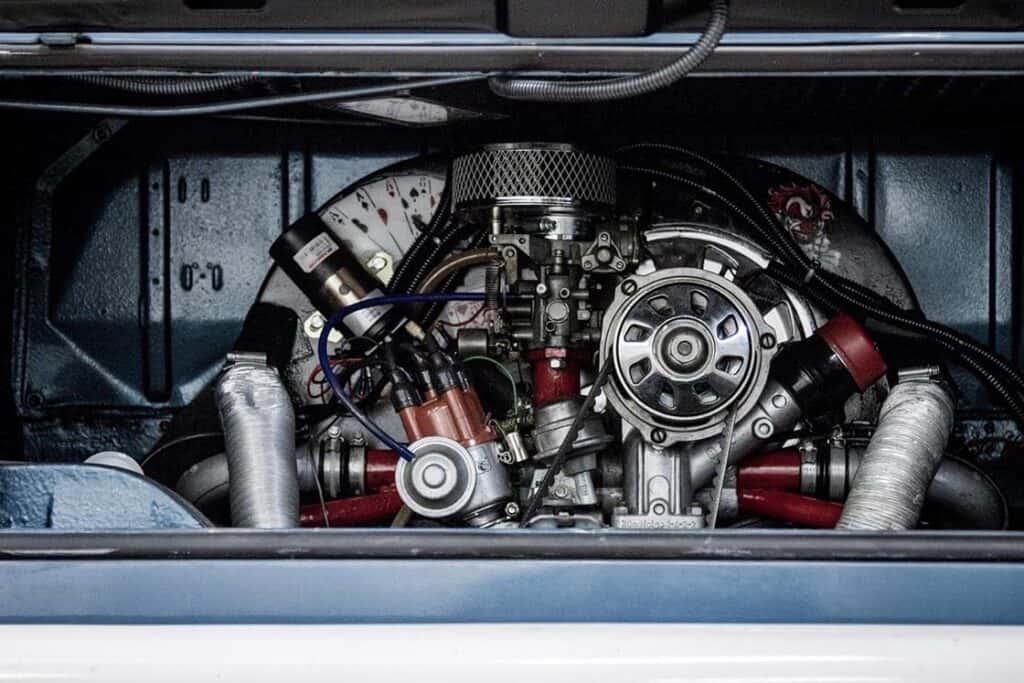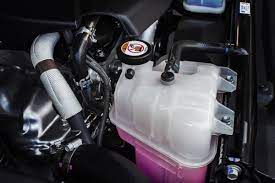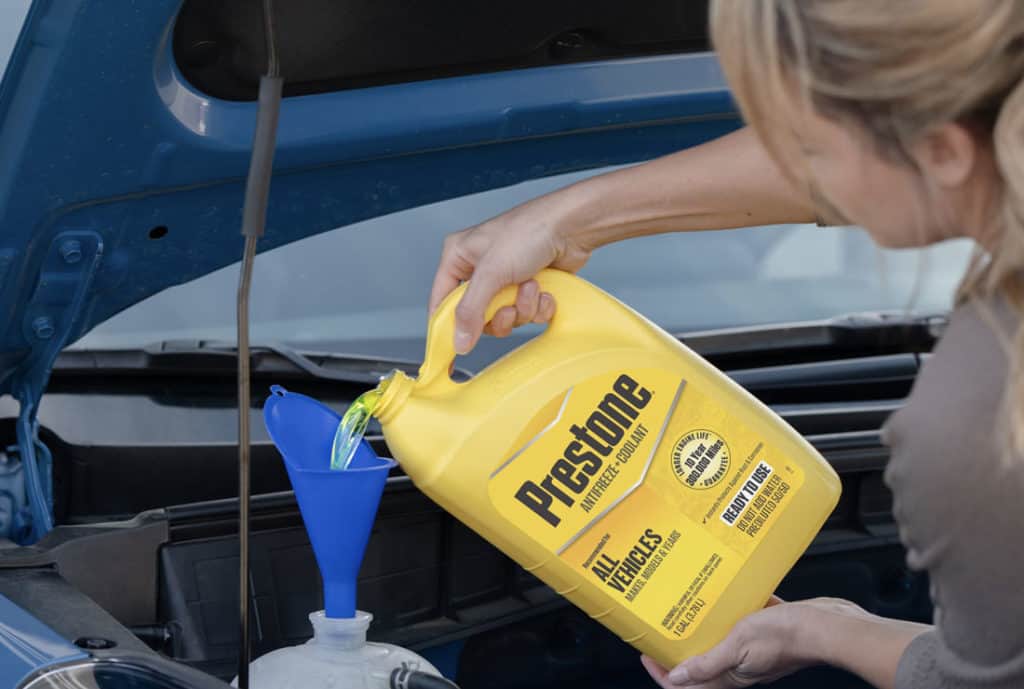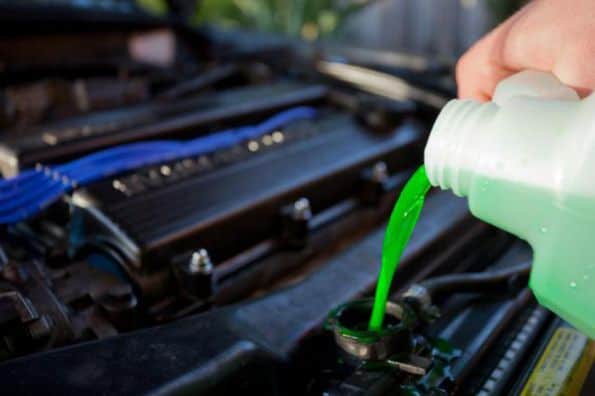If you own a car, you must learn how to take care of it as well instead of having to rush to the mechanic for every teeny doubt. It is also vital for a car owner to understand how the coolant works. Basically, coolants are toxic liquids that go into your car’s overflow tank or reservoir to keep the engine functioning smoothly at a satisfactory temperature without blowing up the head gasket. But just because it helps the engine run, it does not mean that overfilling or having an excess of it is a good thing; it’s actually a bad thing.
It is imperative to know when your coolant overflow tank is low, when it is overfilled and when it is just perfect. Usually, you can tell by looking at the body of the overflow tank where there will be two marked lines: Full and Low. These marked lines will tell you whether your coolant is below the required limit or above. If the coolant appears to be below the ‘Low’ mark, simply add more coolant to the overflow tank till it is a few centimeters below the ‘High’ mark.
But simply knowing how much coolant should be in the overflow tank is not enough, you need to understand the mechanics of it to be able to take care of your vehicle better and to throw around advice at other people and feeling like a pro!
Table of Contents
How does a coolant work

The coolant overflow tank plays a significant role in making sure that your car and specifically your engine can run smoothly. Any issues with this particular part of your car may cause serious damage to the inner mechanics of your engine. So, let’s not waste any more time and get right down to understanding the role of coolant in your car.
Your engine burns fuel to power and runs your car and while it does so, a generous amount of heat is generated. Now, we know that heat is a natural by-product of a car when it is running but if the heat reaches a certain harmful level, it can cause the cylinders to crack and the engine head gasket to blow up. None of these are small issues and would result in your car stopping functioning altogether.
Why do we need coolant in our overflow tanks?

Just like our body, our car is fitted with a cooling system whose sole purpose is to extract heat and ensure that the engine does not cross the average or optimal temperature requirement. The cooling system circulates coolant to the engine through pipes and the main water hose surrounding the engine.
The extracted heat from the engine is converted into gas and sent to the radiator; here it is once again converted to a liquid. While performing this procedure, the radiator simultaneously throws out the extracted heat outside the car.
As the car’s temperature rises to a certain degree with continuous usage, the spring in your radiator cap expands to release pressure which allows the coolant to escape and trickle down to the overflow tank. The coolant is deposited there and stays there until the engine cools down and requires additional coolant from the overflow tank to continue the circulation of heat.
Ideally, your car requires the coolant to be at least 30% filled when it is empty. Most cars have their overflow tanks marked with a minimum and maximum requirement on the side of the tank.
Now that we understand the importance of coolant in the overflow tank, we need to know how to figure out if our coolant overflow tank is not doing what it is supposed to. A coolant leak will disrupt the entire functioning and well-being of your car and a few of the leading reasons for a coolant leak are a bad radiator cap, loose radiator hose clamps, and bad radiator fans.
It is alright for the level of the coolant to drop due to the degree of the temperature of a running engine, a small amount of coolant usually drops through vapor. But a leak implies that the stored cooling is dripping down and reduces the level drastically. To ensure this does not happen to you, check your coolant level and radiator regularly.
How to calculate how much coolant should be in the overflow tank

It is time to get a little mathematical, but don’t worry, it is a simple and easy-to-remember method to follow! But before you learn how to get to the amount of coolant you need, you need to have an antifreeze hydrometer which will help you check the coolant level and its condition.
To figure out the reading of your hydrometer, begin by checking the color and number of the floating balls or the point of the freeze point scale where the arrow is pointing. The hydrometer should highlight a range of 34 F or below to 265 F or higher, and if the meter indicates anything in between these numbers then it indicates that the coolant system needs to be flushed out.
Step 1: Figure out the coolant holding capacity of your car from the owner’s manual.
Step 2: Note down the readings of the hydrometer as well as the readings of concentration of water to antifreeze.
Hydrometer reading on the concentration of antifreeze to water. Anything between 33%-50% is okay.
Step 3: Multiply the coolant holding capacity into the percentage of antifreeze currently residing in the cooling system. For example, if your car’s antifreeze level is at 25% and the vehicle holds 12 liters of coolant, then you need to multiply 0.25 x 12 to determine the amount of concentrated coolant.
Step 4: To determine the amount of coolant to be added, multiply the liters of coolant the car can contain within itself with the exact percentage of pure coolant that is needed.
For instance, in case you want the coolant system to hold 60% of coolant, you would need to multiply 0.60 x 12 to get the amount of 7.2 liters.
Step 5: Next, begin by subtracting the amount of coolant residing in your system from the desired amount that needs to be achieved.
Using the above-listed examples, you would need to subtract 3 liters from 6 liters to get the amount of 3 liters.
.
Frequently Asked Questions
How full should the coolant overflow ideally tank be?
Your coolant overflow tank should at least be 30% full or the level should be between ‘Low’ and ‘High’ when empty.
Do you put the coolant into the overflow tank?

If you are going for a simple top-up, and not full replacement then add coolant to the overflow tank.
If you are going for a complete flush and change of coolant, then coolant needs to be added to the radiator as well.
How much does a coolant reservoir hold?
The amount of coolant your car holds completely depends upon the engine and cooling system. A small displacement 4-cylinder engine could hold as few as 6-7 quarts whereas a large V-8 engine could hold more than 16 quarts.
How long can you run an engine without coolant?
It is highly inadvisable to run your engine and car without coolant but if you really must do so, your car could probably run for a minute without experiencing severe damage. You might be able to make it run for a maximum of 5 minutes without a coolant depending on the car model, engine, and the strain you are putting on the engine to run.
What would happen if you overfill the coolant reservoir?
Your car’s cooling system is typically built to hold a small amount of excessive coolant fluid and more often than not, the extra fluid is simply let out or drained from the overflow hose. One might notice a lot of coolant pooling underneath the car. But in certain cases, overfilling the antifreeze tank could lead to an electrical shortage if the overflow drips or leaks onto the engine wires.
Conclusion
Coolant is a crucial component of the car and acts as the cooling system of the car. This simply implies that one cannot go for a period longer than 5 minutes without it as it can severely damage the car and the engine. It is a rather simple substance but with great responsibility.
This article has taught you how to calculate the amount of coolant your car might need so you can fix your coolant situation at home instead of having to rush to your mechanic for a teeny thing.
